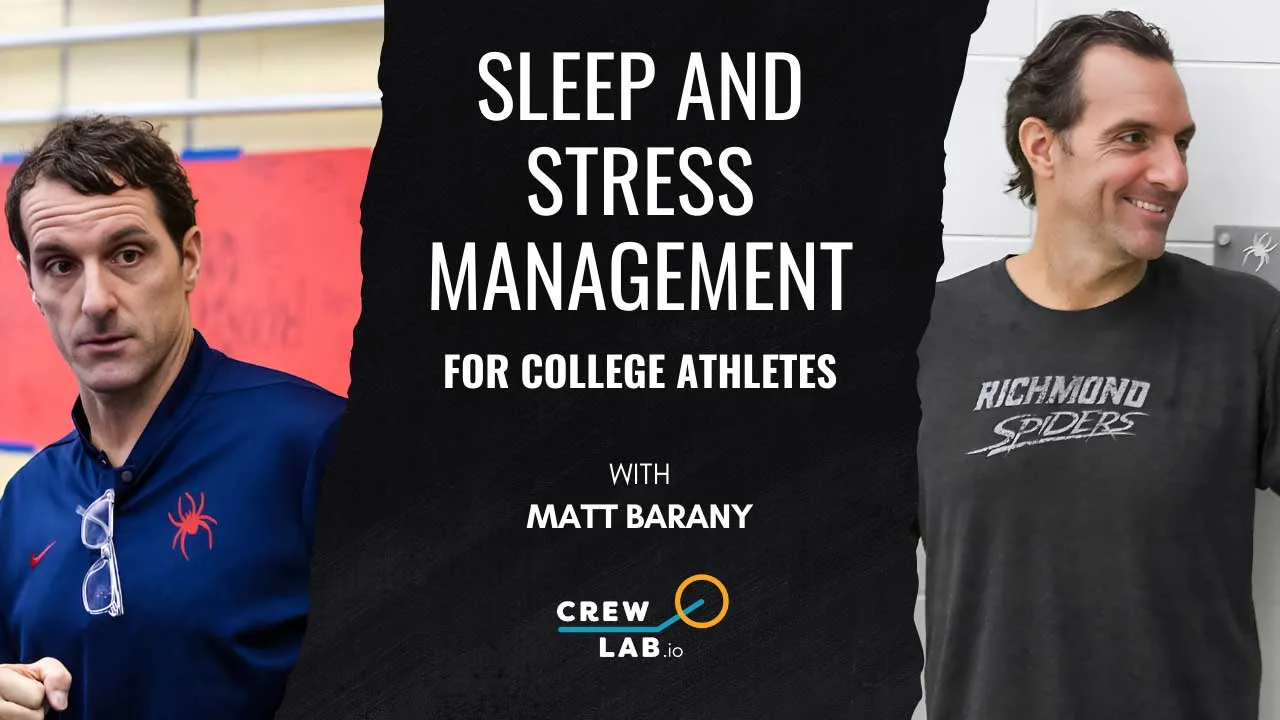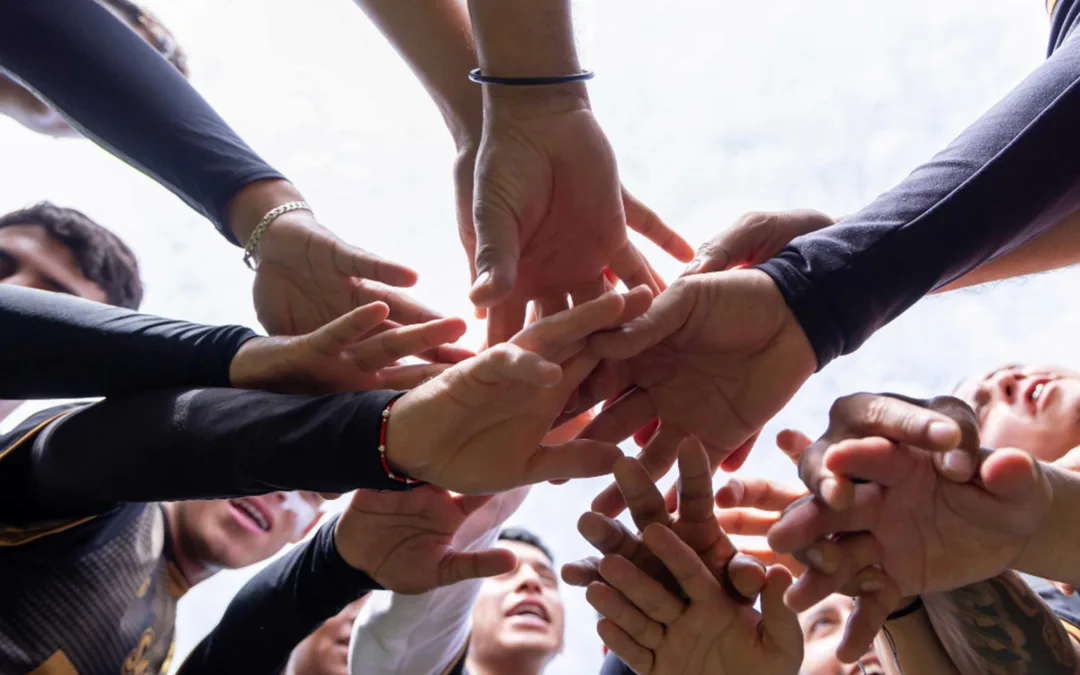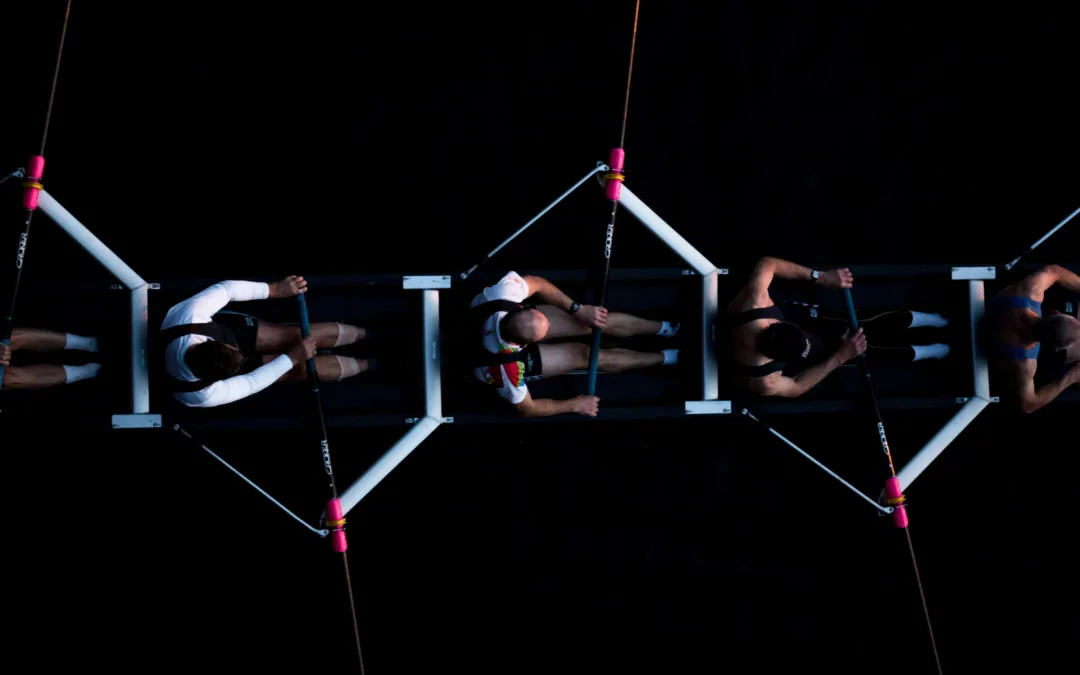The path to 12 Atlantic 10 championships wasn’t paved with just hard work in the pool. For University of Richmond women’s swim coach Matt Barany, success came from revolutionizing college athlete sleep management and understanding something most coaches overlook: what happens during the other 20 hours of the day when his athletes aren’t training.
After nearly two decades leading the Spiders, Barany has developed an athlete sleep management approach that challenges conventional wisdom in college athletics. His focus on system design over individual behavior modification has transformed not just his team’s performance, but their entire college experience. The results speak for themselves: athletes went from averaging six hours of sleep per night to seven hours and 25 minutes, while team GPA jumped from 3.0 to 3.82.
Understanding the real stress calendar for college athletes
Most university resources funnel toward finals week. Counseling centers staff up, professors extend deadlines, and coaches traditionally ease off the training load. But when Barany’s team started tracking stress through wearable technology in 2016, they discovered something unexpected about college athlete sleep management and stress patterns.
“Finals was the fifth most stressful time of the semester,” Barany explains. “The most stressful time of fall semester is not finals, it’s not midterms. It’s the Sunday and Monday night after Thanksgiving.”
The reason? Travel chaos combined with looming deadlines created a perfect storm of stress. Athletes driving I-95 from New Jersey expected a five-hour trip but arrived at 6 PM instead of noon. Flights during peak holiday travel got delayed. Meanwhile, assignments piled up.
This insight changed everything. Understanding the actual stress calendar allowed Barany to adjust physical training loads when psychosocial stress peaked, not when everyone assumed it would.
The 85-minute college athlete sleep management breakthrough
When Barany first put wearables on his team, the data showed an average of six hours of sleep per night. Division I women’s swimmers typically clock around six hours and 20 minutes. The average college student gets roughly six hours and five minutes to six hours and 35 minutes.
Ten semesters later, his team averaged seven hours and 25 minutes.
That’s nearly an entire additional sleep cycle per night. Seven extra sleep cycles per week. The impact went beyond the pool. The team’s GPA jumped from 3.0 to 3.82.
But here’s what makes Barany’s college athlete sleep management approach different: he didn’t just tell athletes to sleep more.
“If you really want high performance, the system needs to change and we can’t simply expect the individual to modify by 85 minutes,” he says.
Building a system that supports athlete sleep optimization
Instead of lecturing about sleep quantity (which only added stress for high-achieving women), Barany redesigned the entire practice schedule around consistency and regularity. This systematic approach to college athlete sleep management proved far more effective than wearables alone.
The team now trains Monday, Tuesday, and Wednesday mornings in a row, then takes Thursday morning off before returning Friday morning. This creates a consistent sleep onset pattern Sunday, Monday, and Tuesday nights.
“The brain is a pattern recognizing machine,” Barany notes. When they alternated morning practices, sleep onset bounced between 10 PM one night and 11:30 the next. Not a great pattern for effective college athlete sleep management.
The Wednesday morning practice was particularly strategic. After five training sessions in three days, athletes were exhausted and naturally went to bed at the same time Wednesday night. But they got to sleep in Thursday morning, accumulating significantly more rest.
Practice also moved from 5:30 AM to 6:00 AM, with heavy education around maintaining the same sleep onset time despite the later start.
Recovery time: The Wednesday afternoon advantage
Taking Wednesday afternoons completely off solved multiple problems at once in their college athlete sleep management strategy.
For pre-health students (a significant portion of Richmond’s roster), it opened a scheduling block for science labs. For everyone else, it provided breathing room to work, socialize, get a massage, or simply recover.
“In terms of protecting mental health, that’s part of our schedule that really helps,” Barany explains.
This wasn’t just about recovery. It was about giving student-athletes the autonomy to balance their lives without conflicts.
Why education replaced wearables in athlete sleep management
After years of using daily trackers, Barany made another counterintuitive decision about college athlete sleep management. He stopped.
“I think there is a heavy level of fatigue around trackers right now. And I think athletes are letting the trackers dictate too much.”
Instead of constant monitoring, the team replaced wearables with frequent education around sleep and recovery. While Barany can’t measure whether each athlete currently sleeps seven hours and 25 minutes per night, the sustained 3.7+ GPA suggests the college athlete sleep management system works.
The lesson? Early and frequent education is enough. Athletes don’t need devices telling them what to do every day if they understand the principles and operate within a system designed to support those principles.
Strategic training loads and recovery periods
Last November, Barany watched his team fly off the blocks during practice. They looked fast. There were no signs of overreaching or excessive fatigue.
So he did something unusual. Three weeks before their championship meet, he increased their weight room sessions from three to four times per week.
“That’s counterintuitive to a lot of what our sport does or what our sport knows,” he admits.
The decision came from collaboration with athletes and careful observation. When they repeated the approach in February, three weeks before championships, it worked again.
This isn’t about following a template. Richmond never uses the same approach year to year. Every class of athletes is different. Some years they’re loaded with backstrokers. Other years it’s distance freestylers. The training adapts accordingly.
Clear communication prevents athlete stress
Every Sunday, Barany sends an email to his team. Week one includes every single date on their calendar through early May. Recruiting obligations, parents’ weekends, competition schedule, sports medicine appointments, sports information commitments, everything.
He modifies it weekly, but the full picture is always there.
“One of the things I’ve learned with working with high achieving young women is that surprises are not good,” Barany notes.
This level of communication does more than prevent scheduling conflicts. It removes a constant low-level stressor, allowing athletes to plan their semester, anticipate busy periods, and allocate their energy accordingly. Better stress management naturally supports better college athlete sleep management.
Self-selection starts with recruiting
Here’s a stat that reveals Barany’s recruiting philosophy: of Richmond’s 22-person roster, 18 got into the school on their own academic merit.
“That’s a pretty strong indication that they’re going to be able to handle the workload that the professor is going to be asking of them,” he says.
Some athletes have told him college is easier than high school after finishing with 11 or 12 AP credits. When the classroom environment isn’t overly stressful, athletes can handle more training stress. When championship season arrives and training stress gets removed, the adaptation potential is enormous.
What college coaches should understand first
If Barany could give young coaches one piece of advice about college athlete sleep management, it would be this: embed yourself in the college culture to understand the actual stress calendar.
Not the party schedule. Not when fraternities are opening. The academic stress calendar.
“As a coach, I really think you should understand what’s happening during those hours, because then you can understand your methods and how you’re going to press their buttons,” he explains.
This means understanding when papers are due across campus, when labs get scheduled, when registration happens, when housing decisions occur. All the moments that create stress beyond what shows up on a practice schedule.
The goal: maximizing adaptation through stress management
All of this—the sleep focus, the schedule design, the communication, the education—serves one purpose in effective college athlete sleep management.
“My goal is that they have the ability to handle stress. And therefore, while they’re with me, I can put more stress on them,” Barany explains. “Because if I can put more stress on them, then we get to the end of the season and I remove their stress, hopefully the adaptation is through the roof.”
The women on Richmond’s swim team understand stress better than most college students. They understand how to manage their own stress better than most athletes. And because they can handle stress favorably, Barany can push them harder when it matters, then back off at exactly the right time to maximize adaptation.
From Peace Corps to the pool deck
Barany’s path to coaching was anything but traditional. After swimming at James Madison University, he thought he’d go to law school. Instead, he got a teaching certificate, then on a whim applied to the Peace Corps.
Nine months later, he was in Kenya with no cell phone, no electricity, no running water. Living remotely on a school compound in modest conditions. Teaching students who wanted to learn, talking to people face to face, spending time outside.
“That wasn’t hard. Like that wasn’t a stressful time,” he reflects. “It was about as real as it could get.”
When he returned and got a call to start a Division III program from scratch at Randolph-Macon College, he wasn’t particularly interested. But when they said he’d assemble the desk in the office himself, build the program from nothing, that appealed to him.
Three years later, he went back to James Madison as a head coach. By 2005, he landed at Richmond.
“I never imagined I’d be a coach, never once,” Barany admits. “At this point in my career, the sciences has been the most stimulating part of my development.”
That journey from English degree to Peace Corps volunteer to championship coach shaped his philosophy. Coaching is education. College coaches get to pick their students. And the goal is partnership and collaboration, not blind faith.
What happens when athletes trust the process
Barany doesn’t want his athletes’ blind faith because he’s won awards or been coaching for 25 years. He wants collaboration. He wants conversations about what practices motivate them, what events their bodies are designed for, what makes sense for their individual development.
“Let’s try to solve this puzzle together rather than, hey, here’s a template,” he explains.
That approach has produced 12 Atlantic 10 championships, Olympic trial qualifiers, and 10 Coach of the Year honors. But more importantly, it’s produced athletes who understand stress, prioritize recovery, maintain 3.7+ GPAs, and graduate with the ability to handle whatever comes next.
The pool is just where they learn these lessons. The college athlete sleep management system Barany built is what allows them to thrive.
Listen to the full episode
Want to hear more from Coach Matt Barany?
Listen The CrewLAB Report now on:
Want to learn more about building systems that support student-athlete success? Explore CrewLAB for team management, performance tracking, and coaching tools that will save you time.






